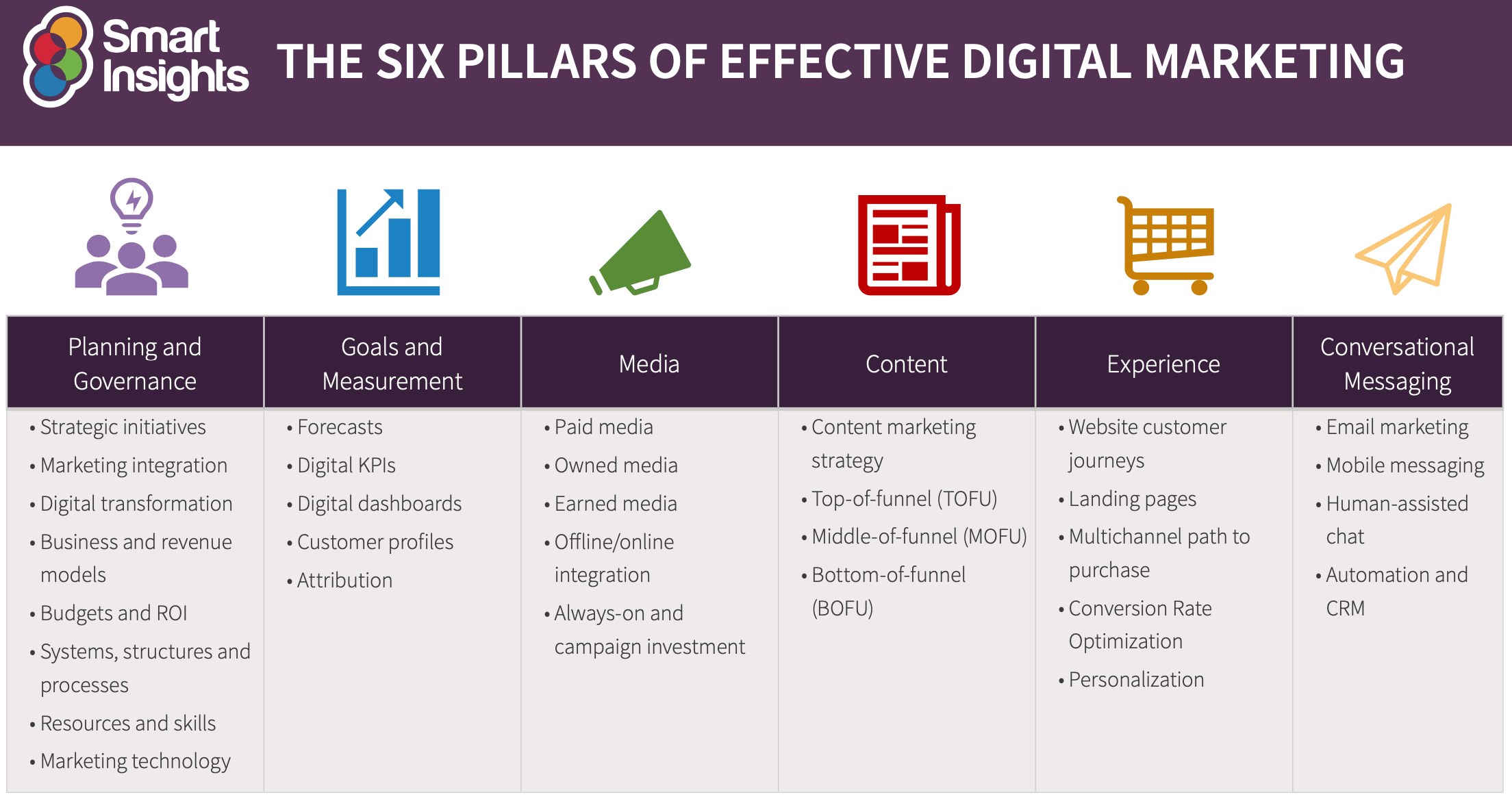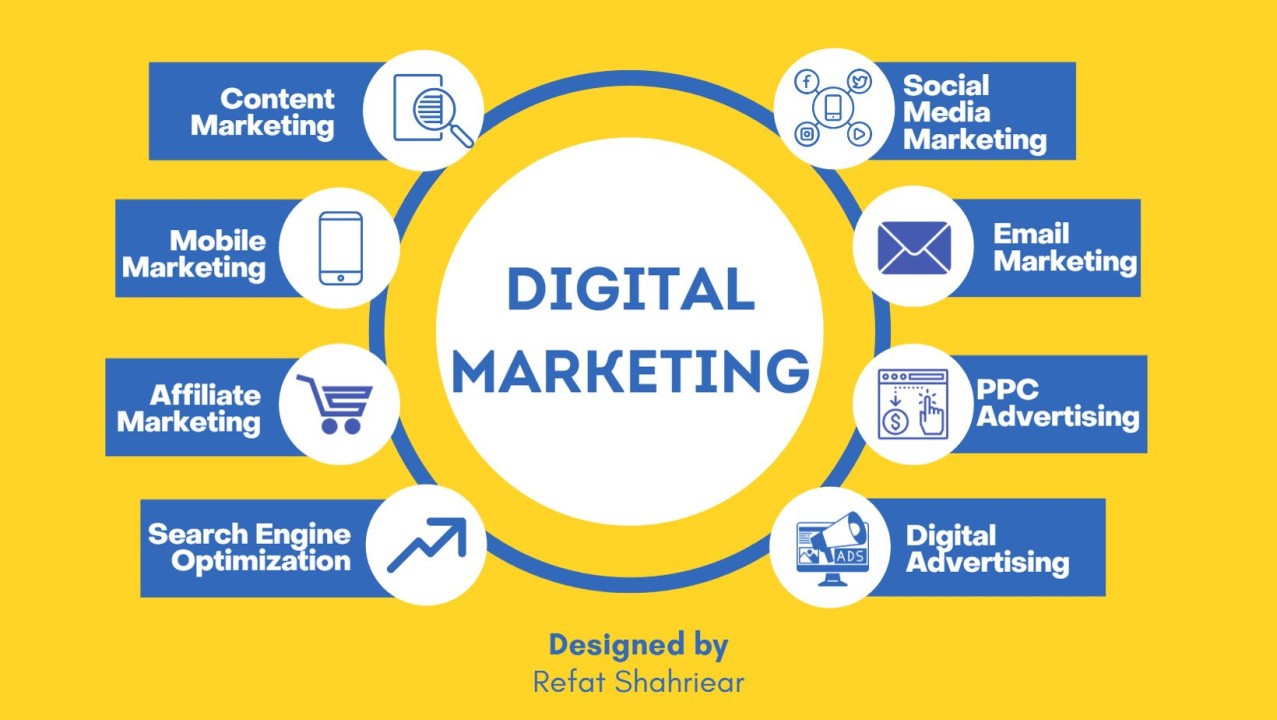Encourage Your Brand with The Ad Firm Digital Marketing: Transformative Approaches Await
Wiki Article
Enhance Customer Experience and Drive Website Traffic With Receptive Website Design
In today's digital landscape, where individuals are accessing sites from a wide variety of gadgets, receptive internet style has actually come to be much more essential than ever. With its capacity to adapt and seamlessly get used to different screen dimensions, responsive style not only boosts individual experience but likewise drives traffic to your site. Why is this layout method so critical? How does it increase customer interaction and rise web site web traffic? In this conversation, we will certainly discover the essential aspects of efficient responsive layout, explore the most effective practices for its application, and reveal the secrets to enhancing user experience while driving more website traffic to your website.Why Receptive Web Layout Issues
Responsive web layout is an important aspect of contemporary web development because of its ability to make sure ideal customer experience throughout various tools and screen dimensions. With the proliferation of smart devices, tablet computers, and other smart phones, it has actually become crucial for web sites to adjust and give seamless functionality despite the tool being made use of.The primary reason receptive website design issues is that it allows users to have a regular and enjoyable surfing experience, no matter the device they are utilizing. A receptive web site automatically adjusts its format, style, and material aspects to fit the display size and resolution of the gadget, guaranteeing that individuals can quickly browse and communicate with the website with no trouble or irritation.
In addition, receptive website design also plays a significant duty in search engine optimization (SEARCH ENGINE OPTIMIZATION) Look engines, such as Google, prioritize web sites that are responsive and mobile-friendly in their search engine result. By integrating receptive layout principles, internet sites can improve their visibility and position, bring about enhanced organic website traffic and prospective customers.

Boosting Customer Involvement Via Responsive Design
Enhancing customer interaction is an essential objective of responsive style, as it guarantees that individuals can conveniently gain access to and connect with web site web content on any kind of gadget. With the boosting use of mobile phones and tablet computers, it is critical for web sites to adapt to different screen sizes and resolutions. Receptive layout allows web sites to automatically change their format and material to give a smooth user experience across devices.Among the primary methods receptive design boosts customer engagement is by minimizing load times. With a responsive web site, individuals do not need to wait on different mobile versions to lots, resulting in much faster access to content. This enhanced rate leads to higher user fulfillment and motivates them to spend even more time on the website.
Additionally, receptive style improves user interaction by enhancing navigating and customer interface (Web Design). When an internet site is developed responsively, buttons and menus are enhanced for touch communications, making it simpler for customers to browse and communicate with the website on their mobile gadgets. This instinctive and straightforward experience keeps users engaged and motivates them to explore more of the web site
In addition, receptive style enables for much better material presence and readability. By adjusting the design and font style sizes to different devices, responsive websites make sure that customers can easily review and comprehend the web content. This enhances user involvement by minimizing the need for scrolling or zooming to check out the message.
Raising Website Web Traffic With Responsive Website Design
With the expanding appeal of mobile tools, having an internet site that is responsive to various screen dimensions and resolutions is crucial for driving raised traffic. In today's digital landscape, customers are accessing websites from a variety of tools such as mobile phones, tablet computers, and desktop computer systems. Each of these tools has different screen dimensions and resolutions, and if your website is not developed to adapt to these variants, it can cause a bad user experience and a loss of potential traffic.
Responsive web layout makes sure that your site looks and operates ideally throughout all gadgets. By utilizing adaptable grids, fluid photos, and media inquiries, receptive style allows your site to automatically readjust its content, navigating, and layout to fit any kind of display dimension. This implies that customers will certainly have a smooth surfing experience no matter whether they are making use of a small smart device or a large desktop computer.
Trick Components of Effective Receptive Style
Reliable receptive layout includes a number of key elements that ensure a smooth customer experience throughout various devices. This allows content to be go to this web-site displayed in a aesthetically attractive and readable way on any device.An additional essential aspect is media queries. These allow designers to apply various styles and layouts based on the qualities of the customer's gadget, such as screen dimension and orientation. By utilizing media questions, designers can optimize the discussion of material for each and every tool, making sure that it is easily available and readable.
Receptive pictures are likewise crucial in effective responsive design. Photos that are too huge can reduce web page load times on mobile devices, while images that are also tiny might appear pixelated on bigger displays. By using methods such as receptive picture resizing and lazy loading, developers can make certain that pictures are suitably sized and maximized for each and every device.
Lastly, efficient responsive style includes a mobile-first method. This indicates prioritizing and making web content for mobile phones initially, and after that expanding and improving the style for larger screens. This approach guarantees that one of the most important web content is easily obtainable on smaller sized displays, while still giving an abundant experience on larger devices.
Finest Practices for Applying Receptive Website Design
Implementing receptive website design calls for mindful consideration of various best methods to ensure an ideal customer experience across various devices. Below are some essential best practices to follow when applying responsive web layout.Firstly, it is important to prioritize mobile customers. With the boosting prominence of mobile phones, making for mobile-first has ended up being crucial. Begin by designing for smaller screens and afterwards gradually boost the design for bigger screens.

An additional crucial ideal method is to enhance pictures for various display resolutions. Large photos can reduce the loading time of your website, specifically on smart phones with slower links. Usage responsive photos that can be resized based on the device's display resolution to boost efficiency.
In addition, test your website on different tools and display sizes to make sure a consistent and seamless experience. There are numerous screening tools available that can assist you determine any kind of problems and make essential adjustments.
Finally, focus on usability and ease your own website of access. Make sure that your website is easy to navigate, with concise and clear content. Make sure that your internet site is accessible to individuals with specials needs and adheres to access standards.
Conclusion
To conclude, responsive web layout plays an essential function in boosting user experience and driving traffic to web sites. By taking on receptive design principles, sites can make sure ideal watching experiences throughout different gadgets, causing enhanced individual interaction (Web Design). Additionally, responsive layout can also add to greater internet site web traffic as it enhances search engine positions and assists in simple sharing of content. Companies ought to concentrate on carrying out the vital elements and ideal practices of receptive design to efficiently meet the needs of contemporary individuals.Optimizing user engagement is a key objective of responsive layout, as it makes certain that customers can conveniently accessibility and engage with internet site material on any gadget. Receptive design makes it possible for websites to immediately adjust their design and material to offer a seamless user experience throughout tools.
In addition, receptive style enhances individual interaction by improving navigation and user interface.Responsive photos are also critical in efficient receptive style. By adopting receptive design principles, web sites can make certain optimum checking out experiences across various devices, leading to boosted customer engagement.
Report this wiki page